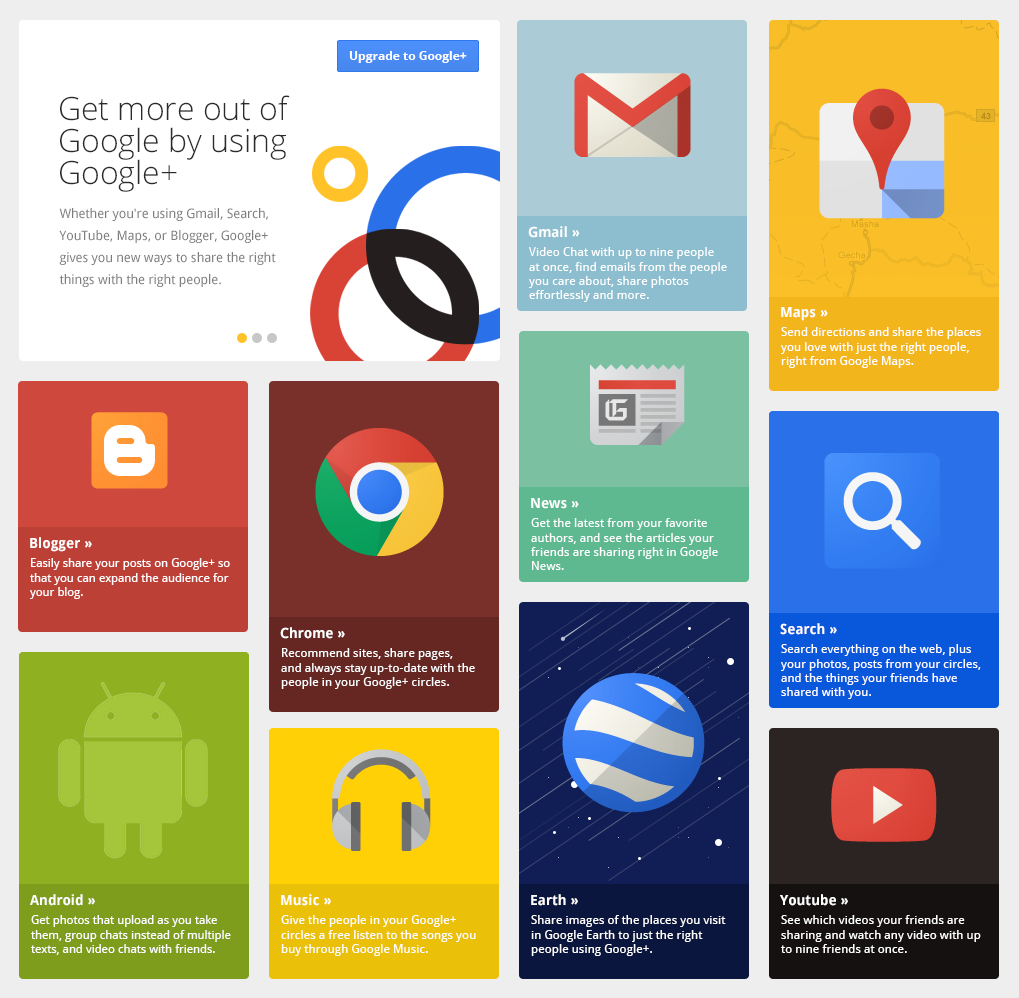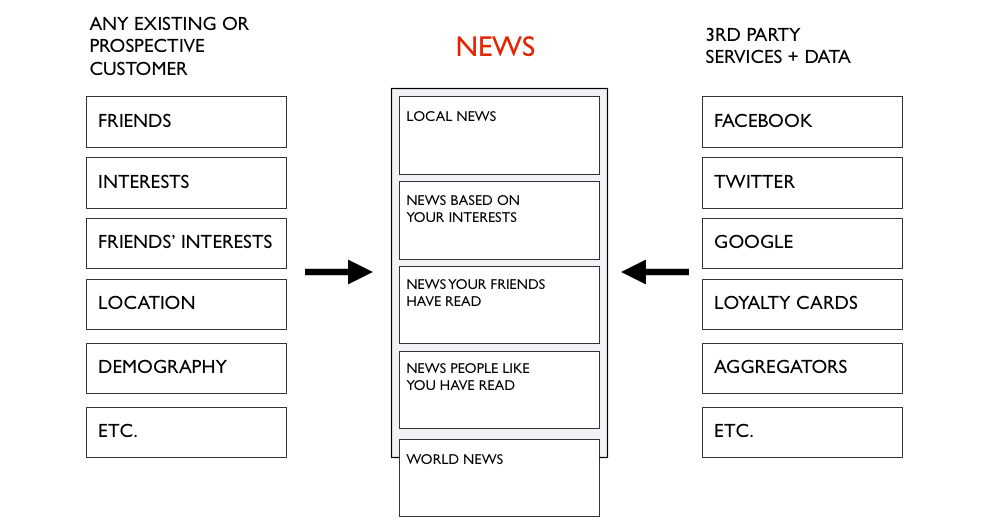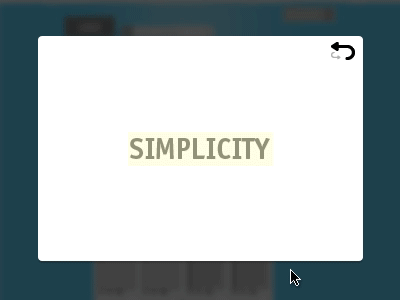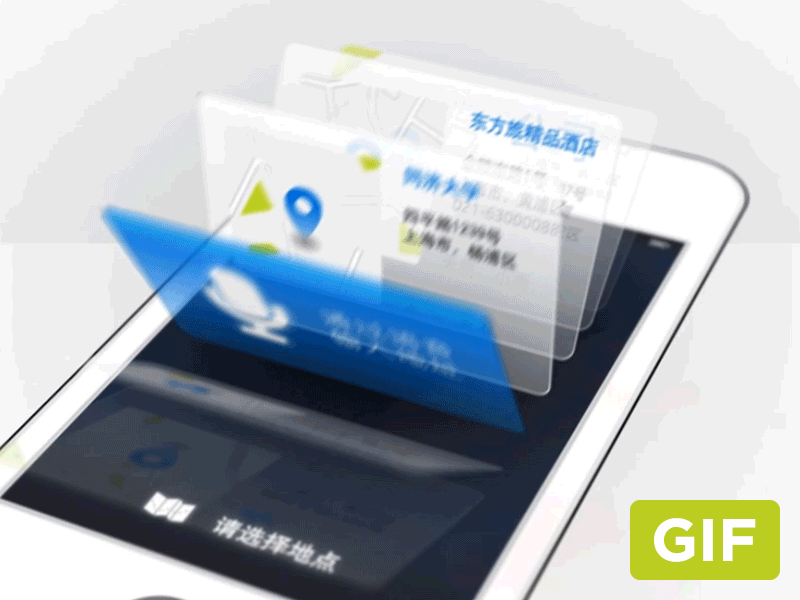Why are cards the future of the web?

Card - the future of the web. They become the best design pattern for mobile devices.
Before our eyes is a revision of the architecture of the web. From pages and addresses to fully personalized interfaces consisting of many pieces of information aggregated from many different sources. Content is broken up and reassembled - and this is the result of the growing popularity of mobile technologies, billions of screens of all shapes and sizes, as well as unprecedented data availability through a variety of SDKs and APIs.
')
All this changes the architecture of the web - from linked pages to linked into a single interface of the elementary parts of information.

Aggregation depends on:
- The person who consumes the content, its interests, preferences and behavior.
- The interests of his friends, their preferences and behavior.
- Location and context.
- Advertising Targeting.
And if the screen of a phone or tablet has become the main intermediary between a person and the web, then cards become the main design pattern. And that's why.
Twitter goes to the cards

Most recently, Twitter launched Twitter Cards , a way of displaying multimedia objects along with tweets that link to them. Today, the New York Times should care more about what their story looks on Twitter card than on their own website, simply because a large audience will see the card.
Google switches to cards

By launching Google Now , Google rethought the delivery of content to users: from search results to personalized pieces of information in the form of cards .

Yandex also uses the cards in the Islands

OfficeArt ( source )
Everyone goes to the cards

Interest is built on the cards. A new feature in Spotifay - Discover - built on cards. Facebook is mainly composed of cards. Many parts of iOS7 are card based (for example, switching between applications and Airdrop ).

Designed by Airdrop and Passbook on iOS7.
The list is growing and despite these numerous examples of the introduction of cards - this is just the beginning.
Card - Information Concentrate

As the format of the dissemination of information cards with us for a long time. In Imperial China, they were used for games as early as the 9th century. Trading cards (an early prototype of a business card — from the translator ) helped 17th-century Londoners find service providers. In 18th-century Europe, aristocratic footmen used flashcards to announce the arrival of a distinguished guest. And for hundreds of years, people use business cards.
We send cards for birthday and other holidays. My wallet is full of debit cards and credit cards, as well as a driver's license card. In my childhood I played card games. Albums with stickers Top Trumps, Pokemon, Panini, which I changed with friends. Board Card Games Monopoly, Cluedo, Trivial Pursuit. In precomputer times, air traffic controllers used cards to control planes in the sky, and some still do.

Storyboard for the movie Blade Runner ( source ).
Cards are a great storyteller. After all, all the great (and not so) films in our time use flashcards for storyboarding the plot (the so-called storyboard - from the lane). Each card represents one scene from the movie. Cards, flashcards, flashcards telling stories. Think of photo cards, each of which holds a small story. And from traveling we send home postcards.

What about commerce? Cards - the predominant format for discount coupons. Remember how you cut off a corner from the packaging of breakfast cereals or how you lectured coupons in a shopping center. The catalogs sent out to hundreds of millions of people every week are full of pages with lots of discount coupons. We cut them out and hang them on the fridge for later use.
Cards can be manipulated

In addition to the authoritative past of the card as to the carrier of information, the most important thing about them is that they can be manipulated endlessly. Take a look at a simple example above from Samuel Couto . Think of cards in the real world: you can flip it over to learn more; minimize to leave only the essence, or expand and see more details. Cards can be stacked to save space, sorted, grouped and laid out, like solitaire, to create a complete picture of the set.

The author is Griffin Johnston.
When designing for screens, we can use all these techniques from the real world, complementing them with animation and movement. We can hint that there is something on the reverse side too or that the card can be expanded. We can insert photos, videos, music in them. And many more new solutions are waiting for them to be found.

The author is Ken Chen ( source ).
Cards are great for mobile devices with different screen sizes. Remember that mobile devices are the heart and soul of your future business, no matter who you are or what you do. Cards can be folded vertically in the form of a tape of activity on the phone screen or horizontally in several columns, if you rotate the tablet 90 degrees. They can be fixed or variable heights.

Card - clean sheet in design
It is already clear that application and interaction designers are actively using flashcards. The same is true for marketers and creatives in advertising. As the social media market continues to grow and break up into a multitude of niche products (occupying more and more of our time every day), marketing budgets will inevitably follow it. The predominant design pattern in the new services and applications will be cards. Consumption of information from Facebook, Twitter, Pinterest, Instagram, Line, and all other services - everything is based on the card metaphor.
I think that we cannot get anywhere from this. Cards are the next big thing in design and it's incredibly exciting.
Notes
Another post about Benedict Evans cards. And the principles of Google Cards are well described in the guidelines . It is they who are the original design reception at Google Glass.
Source: https://habr.com/ru/post/194196/
All Articles